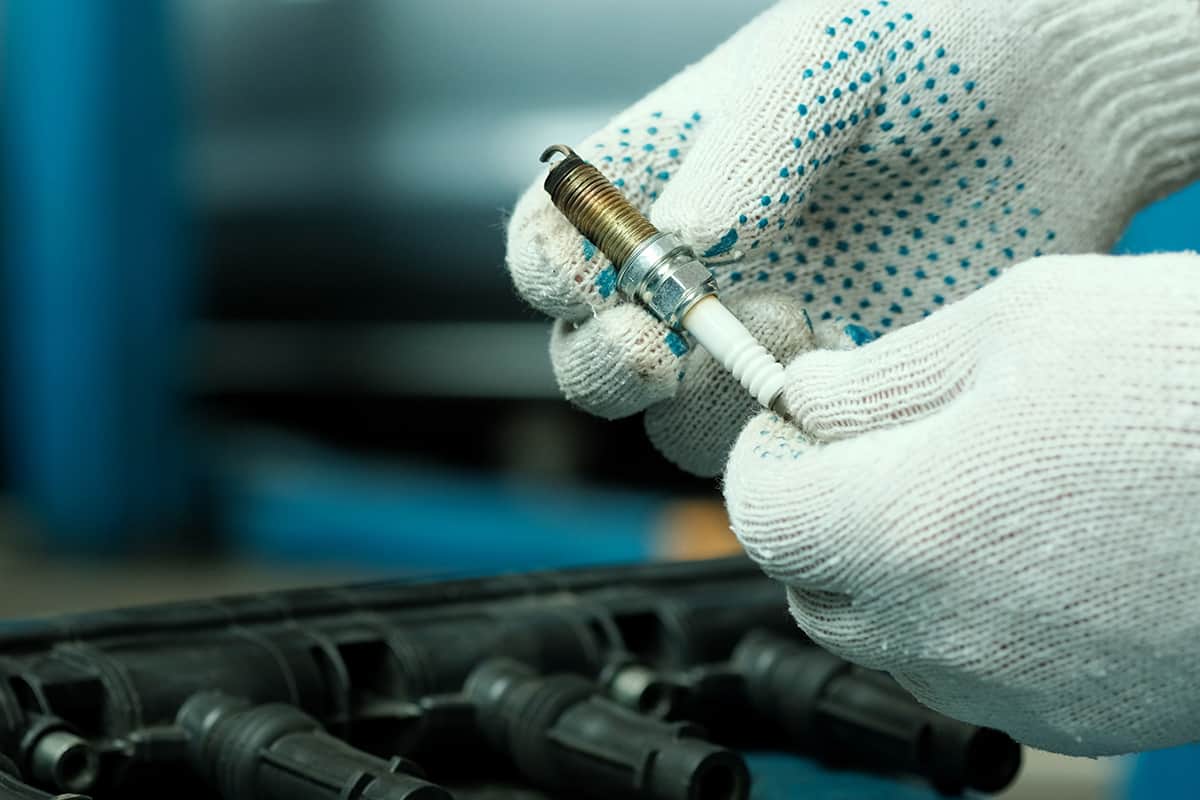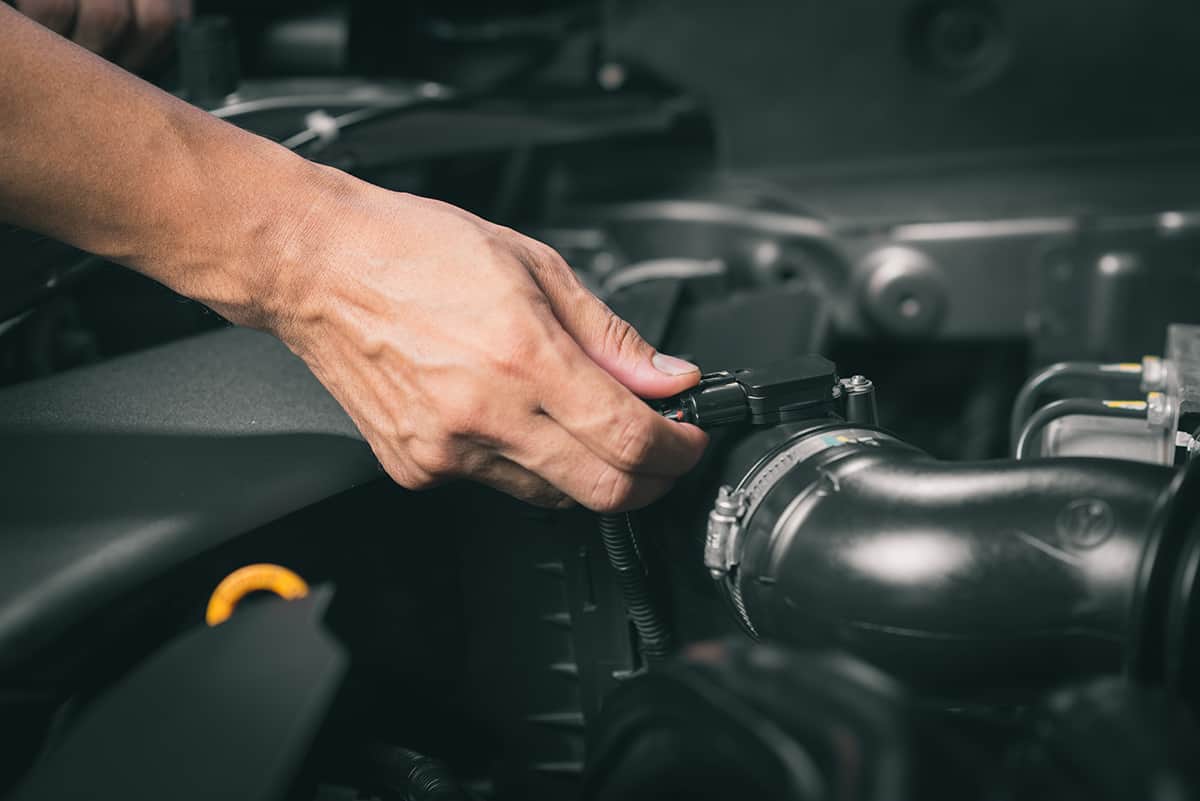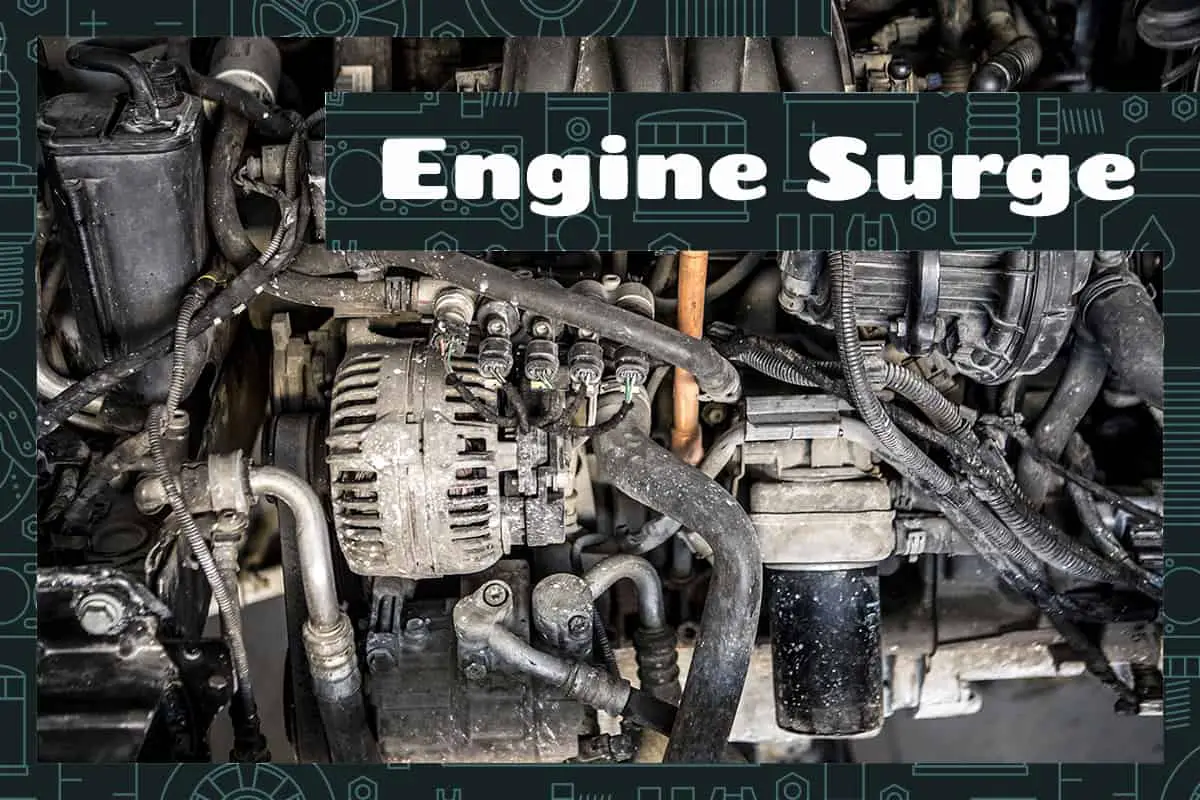Engine surge is an irregularity that can unexpectedly creep into your driving experience, triggering an unsmooth ride and potentially signaling deeper mechanical issues. Grasping this phenomenon is critical not only for maintaining the optimal performance of your vehicle but also for ensuring its longevity.
Engine surge is a fluctuation in a vehicle’s engine speed, often observed as an inconsistent or “surging” idle. It’s typically caused by:
- Disruptions in the fuel supply
- Dirty or defective air filters
- Faulty spark plugs or ignition coils
- Malfunctioning throttle position sensor
- Failure of the mass airflow sensor
In this guide, we’ll look into the mechanics of engine surge, its causes and effects, and how to prevent and address it. You’ll learn to identify signs of engine surge, troubleshoot common issues, and understand when professional intervention may be necessary.
The Science Behind Engine Surge
Understanding engine surge requires a grasp of a few key mechanical principles that dictate an engine’s operation.
Engine Surge and Throttle System Mechanics
The throttle system, crucial in controlling the engine’s power, plays a key role in engine surge. The throttle body houses a butterfly valve, which modulates the air-fuel mix entering the combustion chamber.
The throttle position sensor (TPS) reports the valve’s position to the Engine Control Unit (ECU). If the TPS malfunctions, it may deliver incorrect readings, causing the ECU to adjust the fuel delivery inaccurately, possibly resulting in an engine surge.
Air/Fuel Ratio Imbalance
The engine’s performance heavily relies on the optimal air-fuel ratio, generally 14.7:1 for gasoline engines. This balance ensures complete combustion, providing the power required for the vehicle’s operation. Any deviation from this ratio leads to incomplete combustion, disrupting engine performance.
If too much air (lean condition) or fuel (rich condition) is supplied, the engine may surge. The ECU usually corrects this imbalance, but malfunctions in sensors can throw off these adjustments, leading to surge.
Interplay of Vacuum Pressure and Engine Surge
An engine operates under a state of vacuum during normal conditions. This negative pressure is vital for drawing the air-fuel mixture into the combustion chamber. Disruptions to this vacuum, like air leaks in the intake manifold, can alter the air-fuel mixture, leading to a surge. Regular inspection for leaks in the vacuum system can help prevent such issues.
The Impact of Turbochargers on Engine Surge

A turbocharger forces more air into the engine’s combustion chamber, enhancing the engine’s power. However, it can sometimes contribute to engine surge.
This happens when the turbocharger provides more air than the engine can efficiently handle, known as turbo surge. It usually occurs when rapidly reducing speed after heavy acceleration. Correct sizing and tuning of turbochargers can help prevent turbo surge.
Identifying Causes of Engine Surge
Engine surge is often a symptom of deeper mechanical issues in a vehicle. Let’s take a closer look at some common causes of engine surge.
1. Fuel Supply Disruptions and Engine Surge
Fuel supply to the engine must be consistent for smooth operation. Any interruption can lead to an engine surge. This can occur due to a clogged fuel filter, malfunctioning fuel pump, or blockages in the fuel lines.
For instance, a dirty fuel filter can impede the flow of fuel, creating a lean condition and resulting in a surge. Similarly, a failing fuel pump might not deliver fuel consistently, causing fluctuations in engine speed.
2. Role of Dirty or Defective Air Filters
Air filters trap dust and debris from the air entering the engine for combustion. Over time, these filters can get clogged, restricting airflow to the engine. Replacing air filters as per the manufacturer’s recommended schedule can help prevent such problems.
3. Impact of Faulty Spark Plugs or Ignition Coils

Spark plugs ignite the air-fuel mixture in the engine, with ignition coils supplying the necessary high voltage. Faulty spark plugs or ignition coils can cause incomplete combustion, affecting the engine’s performance and causing surges.
4. The Effect of Throttle Position Sensor (TPS) Malfunction
As discussed earlier, the TPS plays a vital role in the fuel delivery process. If the TPS fails or provides incorrect readings, the ECU might inaccurately adjust the fuel delivery, causing the engine to surge. Signs of a failing TPS include sudden acceleration or deceleration, rough or slow idle, and stalling.
5. Consequences of Mass Airflow Sensor (MAF) Failure

The MAF sensor measures the amount of air entering the engine, helping the ECU determine the optimal amount of fuel for combustion.
A faulty MAF sensor can send incorrect readings, leading to an imbalanced air-fuel mixture and causing engine surge.
Symptoms of Engine Surge
The first step in addressing engine surge is recognizing when it happens. The symptoms can vary, but some are more common and easier to identify than others.
1. Distinct surging sound
The engine makes a revving noise that rises and falls rhythmically, mirroring the irregular RPM fluctuations. It’s not unlike a heartbeat, increasing in frequency as you press the accelerator and decreasing as you ease off.
2. Erratic engine performance
The car may feel jittery or unstable, especially when you’re maintaining a steady speed or idling. You might notice the car speeding up or slowing down without any input changes on the accelerator. This erratic behavior can be particularly noticeable during longer drives or heavy traffic conditions.
3. Increased fuel consumption
As the engine struggles to correct the inconsistent air-fuel mixture, it might end up consuming more fuel than necessary. Keeping an eye on your fuel gauge and tracking your car’s fuel economy can help you identify any unusual spikes in fuel consumption.
4. Flashing check engine light
Your vehicle’s warning lights are there for a reason, and the check engine light is one that you should never ignore. If it starts flashing or stays on, it’s a sign that something isn’t right. While there can be many reasons for the check engine light to come on, an engine surge could certainly be one of them, especially if accompanied by other symptoms mentioned here.
Impact of Engine Surge
Ignoring engine surge or delaying its resolution can have severe implications on your vehicle’s performance and longevity. Let’s delve into the immediate and long-term impacts of engine surge.
The Immediate Effects of Engine Surge
Engine surge is more than just a bothersome noise from your car; it impacts the immediate drivability and overall vehicle performance. Here are some of the immediate effects:
- Reduced Engine Performance: The most immediate effect of engine surge is a drop in engine performance. Your vehicle may struggle to maintain consistent speeds, particularly while idling or during steady driving.
- Increased Fuel Consumption: Due to the inconsistent fuel-air mixture, the engine uses more fuel to compensate, leading to increased fuel consumption. This spike can strain your budget, especially with frequent long drives.
- Potential Safety Risk: In certain situations, the erratic behavior caused by engine surge can pose a safety risk, particularly during highway driving, where maintaining a consistent speed is crucial.
Long-term Implications of Engine Surge on Vehicle Health
An unchecked engine surge doesn’t just affect your vehicle’s immediate performance. It can also lead to long-term damage that may cost you significantly in repairs and component replacements.
- Damage to Engine Components: The constant oscillation in engine speeds can stress various components, such as the transmission, pistons, and connecting rods, leading to premature wear and potential damage.
- Reduced Vehicle Lifespan: Persistent engine surge can lower the overall lifespan of your vehicle. The excessive strain on engine components can lead to more frequent breakdowns and, potentially, a complete engine failure if left unchecked.
Engine Surge Prevention and Remedies
Preventing and addressing engine surge is key to maintaining optimal vehicle performance and safety. This section will offer insights into the measures you can take to prevent engine surge and remedies if it occurs.
Regular Maintenance
Regular vehicle maintenance is the best way to prevent engine surge. Ensure timely oil changes, replace air filters as per the manufacturer’s recommendations, and regularly inspect components like spark plugs and ignition coils. Also, consider professional inspections of your fuel system, including the fuel pump and filters, to ensure a consistent fuel supply.
Fuel System Cleaning and Engine Surge
Over time, residue and debris can accumulate in the fuel system, potentially disrupting the fuel supply and leading to engine surge. Regular fuel system cleaning, either through additive cleaners or professional fuel system cleaning services, can help maintain a steady fuel flow and prevent surge issues.
Replacement of Faulty Components
If a vehicle shows signs of engine surge, inspect crucial components such as the air and fuel filters, spark plugs, ignition coils, throttle position sensor, and mass airflow sensor. If any of these parts are worn out, dirty, or malfunctioning, replacing them can often resolve engine surge issues.
Professional Inspection and Repair
Some engine surge issues may require professional intervention. If you’ve tried basic troubleshooting and the problem persists, or if you’re unsure about the cause, consider seeking help from a professional mechanic. Their expertise and advanced diagnostic tools can pinpoint the root cause and recommend appropriate repairs or replacements.
FAQs
1. What should I do if my engine is surging?
If your engine is surging, the first step is to identify potential symptoms, such as fluctuating RPMs at idle, erratic power output, or a decline in fuel economy. Once identified, start with basic troubleshooting. This could involve checking and replacing the air filter if it’s clogged, ensuring your fuel system is functioning properly, and inspecting the spark plugs and ignition coils.
Check the TPS and MAF sensors as well since malfunctioning sensors can often cause engine surge. If these steps don’t resolve the issue, or if you’re unsure about the cause, consult a professional mechanic. Their expertise and diagnostic tools can pinpoint the issue and suggest an appropriate course of action.
2. How often should I replace my air filter to avoid engine surge?
The frequency of air filter replacement can depend on several factors, including your vehicle model, driving conditions, and the type of filter used. However, a good rule of thumb is to replace the air filter every 12,000 to 15,000 miles or at least once a year.
If you frequently drive in harsh conditions such as dusty or polluted environments, you may need to replace the air filter more often. Always refer to your vehicle owner’s manual for specific recommendations. Remember, a clean air filter is crucial for maintaining the optimal air-fuel mixture, preventing engine surge, and ensuring efficient vehicle operation.
3. Can engine surge cause permanent damage?
Yes, persistent engine surges can lead to long-term damage if not addressed promptly. Engine surge is a sign of inefficiency in the engine’s operation, causing stress on various components. It can wear down parts like the throttle body, fuel pump, and spark plugs over time.
In more severe cases, persistent engine surges can lead to more significant engine damage requiring extensive and costly repairs. Therefore, it’s essential to address any signs of engine surge promptly and perform regular maintenance to ensure your vehicle’s performance and longevity.






